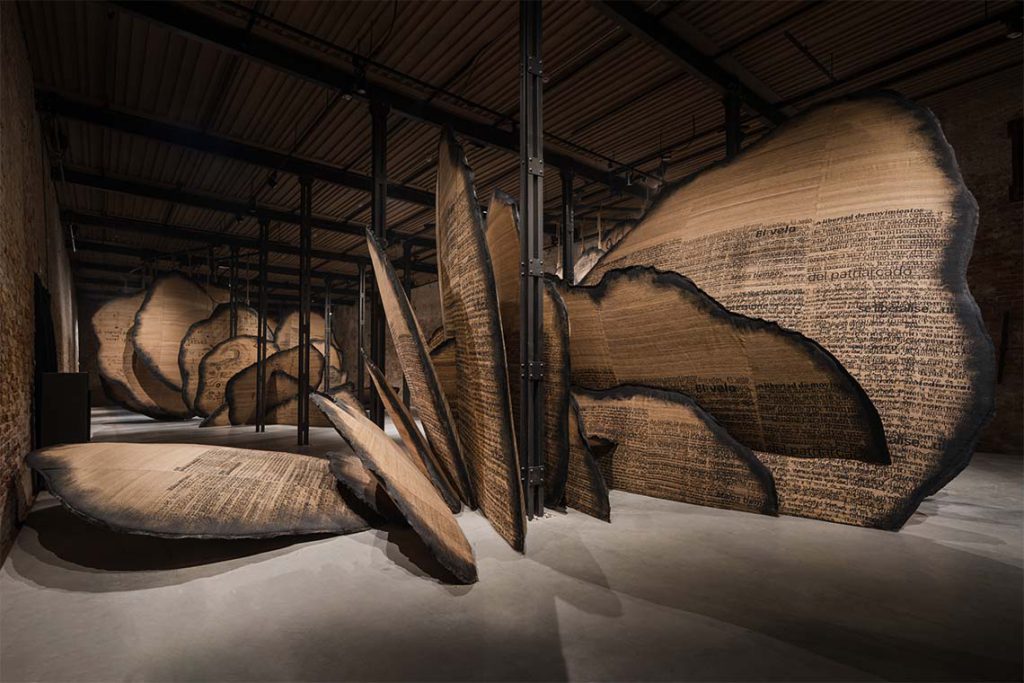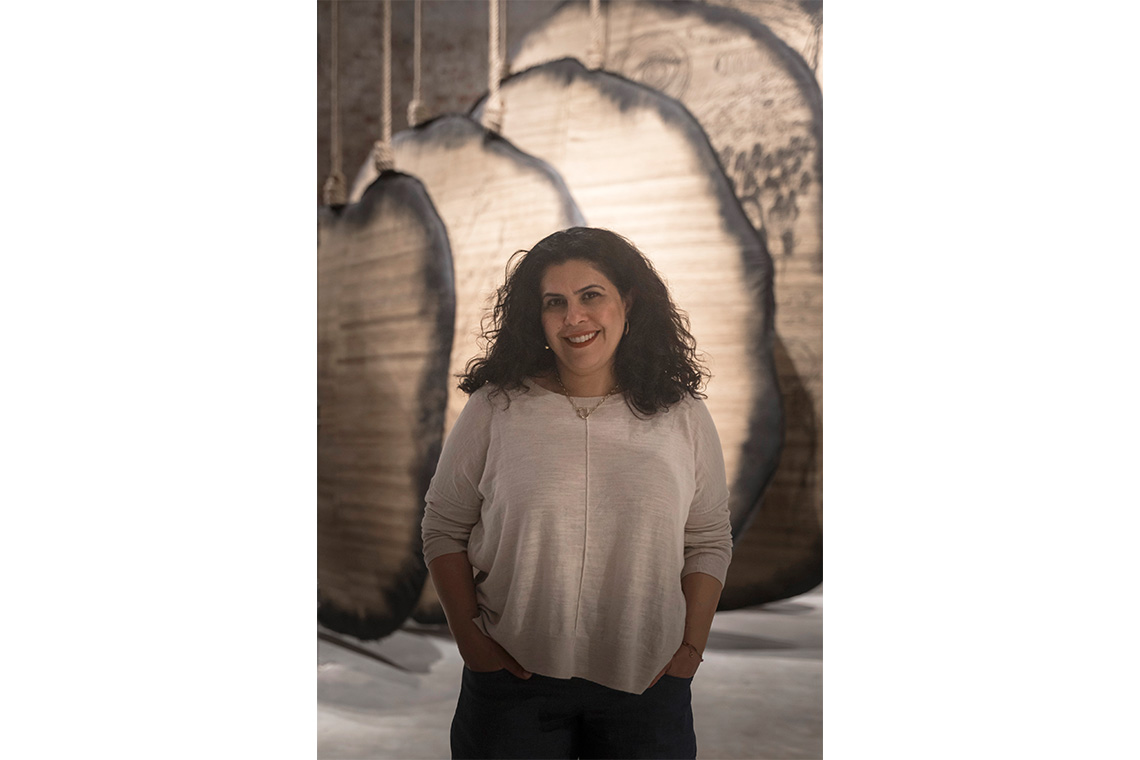In an exclusive interview for Canvas, the artist reveals how she approached her work for the National Pavilion of Saudi Arabia for the 60th Venice Biennale, and why community participation is at the core of her practice.
What was the preparation process and journey in the lead-up to the work shown in Venice?
The work has three layers: the participatory action, the sonic sound and the soft sculpture. For the first of these, I went to three cities in Saudi Arabia and invited thousands of women to come in and think about the ideas that I was presenting in this artwork. Their engagement helped me formulate the language through drawings and statements. From there, we eventually got together and did some group humming and singing. The second layer is the underlying sound, which is the sonic space we’ve created. The audio was captured in the Empty Quarter of Saudi Arabia, where I went with my full team to try to capture the sound of the “booming” or “singing” sand dunes. Finally, the soft sculpture is a form that I’ve worked with for many years now. It’s inspired by the Arabian desert rose, a crystal formation that I found right outside my mother’s home. I use it as a form that I inscribe on and I address this form as a body.
Were you expecting this level of participation, with so many women involved?
I’ve been doing participatory art for the past 20 years with some of my major artworks, such as Esmi – My Name (2012), Tree of Guardians (2014) and Suspended Together (2011). All of those were prepared and presented during a very different time in Saudi Arabia. Since then, many hundreds of women have participated in my work, and even now I have just finished a huge participatory action in an arena where I engaged both men and women, the whole community actually. So, when I started to work on this new series of participatory art for Venice, a lot of people who joined were former participants and some of the spaces that I used were spaces that have supported me in the past 20 years. The number of women who came to join in this work was incredible and the response was very beautiful. During the sessions, I usually start off by asking the participants if anyone has participated before in one of my artworks, and then you always see a sea of hands come up! It really warms my heart to know that these women have come back over and over, to engage with contemporary art, to think about critical ideas and to have fun in solidarity with their sisters and women across the country.
You mentioned your earlier works. How did you build upon these for Venice?
This artwork carries a lot of the meanings that have continued throughout my practice. One of them is thinking about media. Two of my sculptures have a lot of printing and language that comes from mass media, structured around newspapers, ideas and archives. Placing the media on the soft sculpture, layering it and obscuring it, is removing the power from words and languages for me and for my community. With the participatory art, it captures language from the community, which I have no control over. Sometimes you go into these workshops not knowing what the results might be, and for this work I was quite surprised by the drawings or statements that were made by women from across the country. So, at the centre, I’ve placed the artworks by the women. They are floating and not obscured, which is when you start to see the visibility and invisibility, presence and absence, and the language that surrounds this kind of expression. These various elements have transformed themselves in different ways throughout my practice.

What are some of the challenges and responsibilities of representing your country?
It is a big honor to represent Saudi Arabia at the Venice Biennale. I’ve been coming to Venice for more than 12 years and I’ve been observing what artists bring to represent the contemporary moment in their own nations. So, when I was asked to represent Saudi Arabia at Venice, I really needed to look at the ‘here and now’ in my country, in my society, in my community, and within my own context as an artist. It is a huge responsibility to represent a nation, but also a very difficult act for an artist to hold their language within this context, to keep their process and the way they think and ensure that how they express their work is clear.
What impact do you hope this representation will have on the international audience coming to Venice?
The artwork really talks about stereotypes and ideas of ‘othering’ and pushing artists, nations and communities to the fringes. I hope that people who come through this pavilion recognise that there are voices that sometimes are not heard and that, in the end, it is your responsibility to find the truth within the cacophony of crazy media representation, archives and histories that are written.
How did you feel being asked to represent Saudi Arabia at Venice?
The person who told me that I was nominated to represent the country was Dina Amin, Commissioner of the National Pavilion of Saudi Arabia and Chief Executive Officer of the Visual Art Commission, someone in the art world I have known for many years. It was very emotional for both of us because we grew up in the art world together. After the news, I called my mother first and said “Mama, I’m going to Venice!” Her response was “Finally!” I’m very happy to be here to share this excitement with my studio team, the team at the Ministry of Culture and my art family. This is an excellent community in which to flourish as an artist.
What would you tell your younger self now, looking back at your career? What advice would you have shared?
This is what I would say to younger Manal: Believe in yourself and in your taste. Do not look for validation from external parties and always speak your truth. Don’t let anyone influence what you feel and what you want to make and leave as a language in this world.



